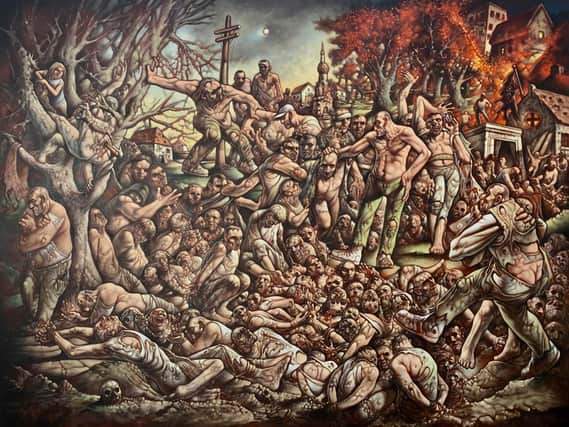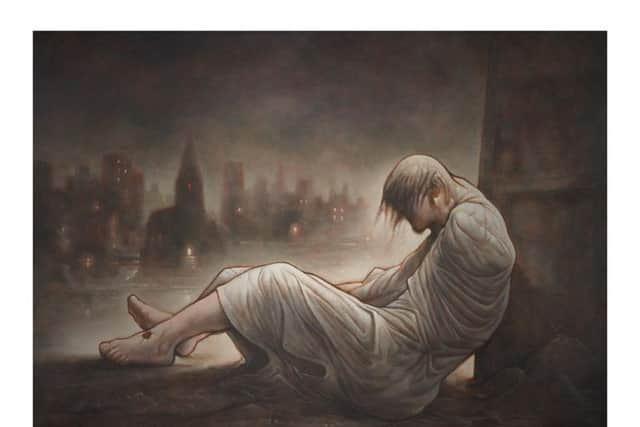Scottish war artist Peter Howson unveils new work to commemorate massacre in Bosnia


The Massacre of Srebrenica will be on display at the St Mungo Museum of Religious Life and Art in Glasgow for the next three years after being created by the painter to commemorate the 25th anniversary of Europe’s biggest mass murder after the Second World War.
Howson, who was Britain’s official war artist during the civil war in Bosnia, said today he was still haunted by scenes he could only describe as “hell on earth.”
Advertisement
Hide AdAdvertisement
Hide AdThe Glasgow School of Art graduate was commissioned by the Imperial War Museum to produce work in the former Yugoslavia. Much of his work then has addressed themes of conflict, destruction, human suffering and redemption.


The 61-year-old, who has spoken previously about the impact his experiences had on his mental health and the eventual break-up of his marriage, said his new painting was intended to capture “a moment in Europe’s history.”Glasgow Museums chiefs hope that the public display of the painting will help younger generations “recognise the signs of intolerance and the violence it generates.
Howson said: “It is difficult to put into words the horror of the massacre of over 8,000 men and boys in the town of Srebrenica during the Bosnian civil war. I was there as a war artist during this time and witnessed what I can only describe as hell on earth.
"The experience caused me many years of illness and the breakup of my family. I still have memories too painful to talk about, but painting these terrible events helps me to try and understand why we do such evil things to each other.
"This painting records a moment in European history; a memory in my mind’s eye of what happened that day. It portrays people who are dead and people, many of whom are young boys, ready to die.
"I tried to capture the fear on their faces and the twisting contortions of bodies awaiting execution with a bullet. Very little film of the prelude to death is recorded. It would have been different if it happened today in the age of the smartphone.
"The perpetrators show no emotion, just a will to get the job done. The beauty of the countryside is a chilling juxtaposition to the horror of the scene.
"The whole thing is witnessed by a little girl who has climbed a tree. There is not much more you can say. Did the soldiers really believe they were pleasing their God by doing this?"
Advertisement
Hide AdAdvertisement
Hide AdHowson unveiled his new painting alongside his depiction of Jesus as a homeless man, which he created in 2018 in response to a sculpture by Canadian artist Timothy Schmalz for St George’s Tron Parish Church in Glasgow.
Howson, from Prestwick, in Ayrshire, said his portrayal of Jesus was intended to show the isolation and loneliness of a “champion to the outcast and friend of the homeless.”
Harry Dunlop, learning and access curator with Glasgow Museums, said: "War and persecution motivated by religious and ethnic hatred continues to force hundreds of thousands of people from their homelands.
‘St Mungo Museum’s founding principle is to further understanding and respect between people of different faiths and those of none.
"We are hugely indebted to Peter Howson for loaning this extremely powerful and challenging painting to Glasgow Museums.
"It hangs in the museum's most prominent space because we hope it, together with other works on show, will raise awareness of the need to recognise prejudice, extremism and exclusion and the hatred it creates, and ultimately take action to end it.
"Peter’s work is difficult to look at, but that is the point of having it at St Mungos. We must continue to learn from past atrocities and ensure younger generations know how to recognise the signs of intolerance and the violence it generates wherever in the world it occurs and take action to stop it."